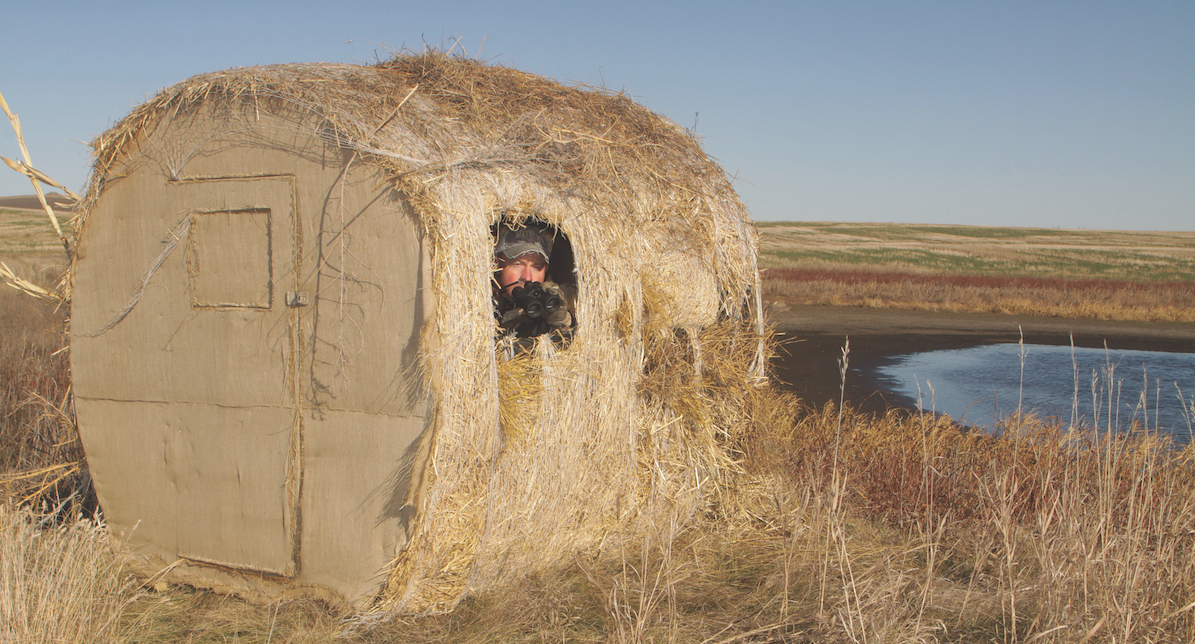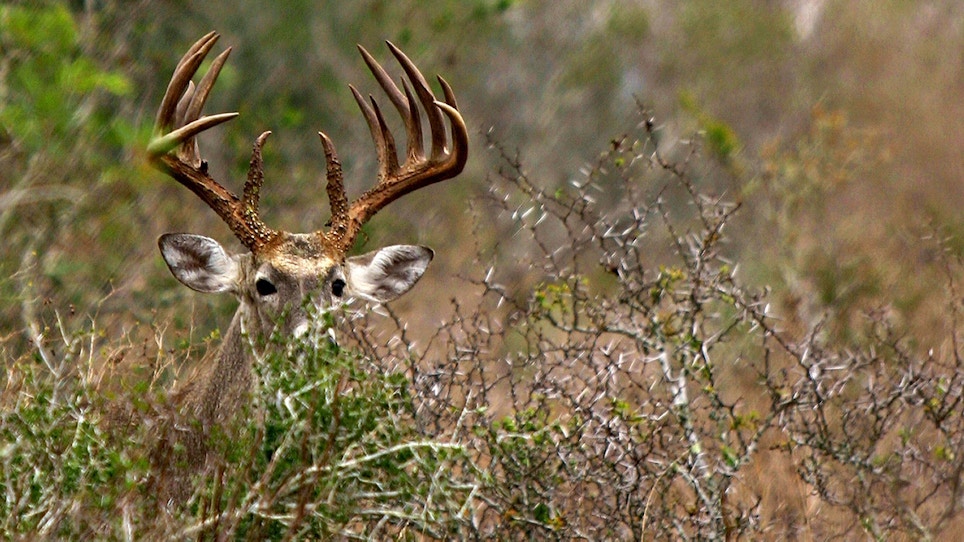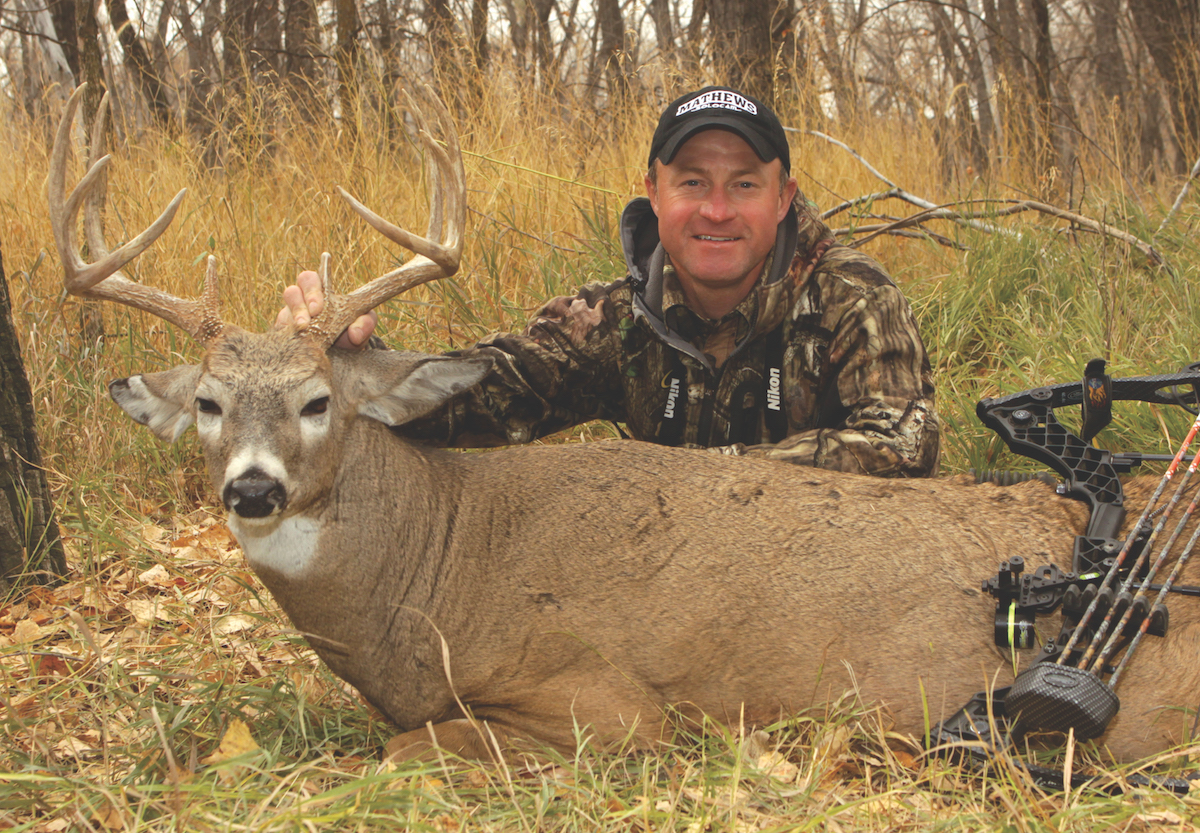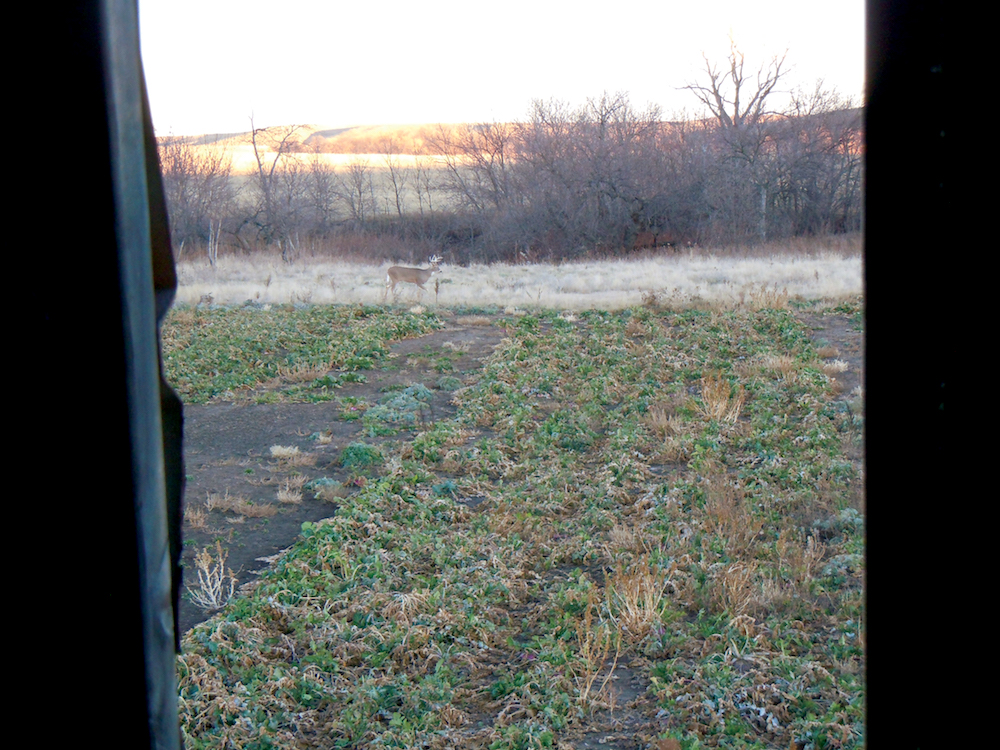Thoughts of classic whitetail country typically conjure images of sprawling woodlands abutting bountiful agriculture fields. That’s the dream, but sometimes it's not the reality. Instead of a classic edge, you may be struggling with whitetails that, like spooked cottontails, dodge in and out of small cover.
Whitetails can live comfortably in a medley of landscapes, and they’re not afraid to hunker in habitat parcels that don’t fit the classic image of what we perceive as whitetail country. Depending on region, a whitetail may be forced into less-than-ideal cover.
If you find yourself in this quandary don’t give up. Small cover doesn’t necessarily equal failure. It just requires a fresh look at the situation and a willingness to use tactics outside of the whitetail norm. But rest assured, you can hunt small cover for big bucks.
Defining Small Cover
What classifies as small cover? In my youth growing up in the farmlands of eastern South Dakota whitetails relished in unlimited cover until the John Deere’s fired up at harvest time. As the corn headed to Kellogg’s, whitetails were left with a barren landscape. They either had to risk it all in the wide-open or utilize small cover to survive.
A few lucky whitetails lived near major riparian corridors, but the vast bulk of deer had to prod pheasants, bump bunnies and drive ducks from cover to capitalize on new digs. I’ve seen the same playbook while hunting in parts of Iowa, Kansas, Nebraska, Illinois and even in eastern whitetail states like Maryland, and all the way into the southeast whitetail mecca of Alabama. Unique circumstances across whitetail country could find you staring at small cover and wondering how you’ll tag a buck living in it.
Instead of backing away or worse yet, bumping a buck out of a postage-stamp parcel, embrace the situation as a hunting challenge. Whitetails are whitetails and you can still apply some of the basic strategies, and techniques for success. D.J. Randolph understands this concept fully as a native of Ohio. Randolph is a regional pro staff manager for Mossy Oak. North Dakota is home now, but he bowkilled his first whitetail at age 12 in Ohio. That’s where he gained his whitetail education, but relocating to North Dakota forced him to reconsider whitetail strategies he learned in his youth. After more than three decades of pursuing whitetails in his home state of North Dakota or beyond, he understands that whitetails can disappear in the most scant cover available.
“I moved to North Dakota 27 years ago,” Randolph shared. “I had grown up hunting hardwood hill country so it took me a few years to learn what areas open-country deer used for bedding.”
He quickly surmised that deer would use any wooded areas as cover including tree rows, creek bottoms and abandoned farmsteads, but what really surprised him was the fact whitetails regularly hid in the cattail sloughs, regardless of size.
“There is one slough in particular that is only about 1/2 an acre in an otherwise open field. It almost always holds deer,” Randolph explains. “Other areas that have surprised me are rock piles cleared from farm fields, drainage ditches and even small areas with junked cars that has tall grass growing around them. In open country, whitetails will use any area that provides them some shelter from the elements and helps hide them from hunters. Whitetails feel safe because these islands are very hard to approach without getting busted.”
Your scouting could reveal a similar pattern of a buck using small cover to isolate itself in a sanctuary setting. Having the ability to watch the perimeter of a small piece of cover gives a buck an ADT security system without paying for installation. It also increases the likelihood a hunter will trip the alarm and alert a buck of impending danger long before a hunter is within shooting range, firearm or bow.
“The biggest mistake I see hunters make with small cover is lack of patience. Small cover means you have a small margin of error. That means waiting for the right time to set up and waiting for the perfect time to hunt,” Randolph stresses.
With Small Cover, Off-Season Scouting Is Key
Despite the size of cover you’re hunting, your end game is to ensure that bucks stay comfortable, unthreatened and going about their daily business. To reach this conclusion you need to scout to understand how a buck is using the cover, and how you plan to intercept the studio apartment tenant. Unlike scouting large tracts of habitat that offer abundant avenues for hunters to slip in and out undetected, an undersized hideout simply increases the chance a buck will spot your scouting intrusion even before you begin the hunt.
“Small tracts are difficult to scout without a buck knowing you are there,” admits Randolph. “For this reason setting up and checking trail cameras can be tricky. My advice would be to set up a camera on trails at the edge of the cover and only check them when the wind is right.”
In the openness of North Dakota, few things trump using optics to glass for whitetails. Randolph uses this tactic year-round, but especially during the firearm season as pressure pushes deer into new hideouts of diminutive nature. It’s a good way to observe deer tucking into small cover without them realizing the surveillance. It’s also a good tactic to employ anytime, and if he had to rely on one scouting window over another, it wouldn’t even be during deer season.
“Off-season scouting is great if you know that you will have access to an area during deer season,” outlines Randolph. “Turkey hunting can be a great time for off-season whitetail scouting. I’ve even discovered some very good deer hunting spots while pheasant hunting. If we jump a good buck out of an area, I will avoid it for several days and then come back to it when the conditions are right to strategize a hunting plan.”
You can also confirm your scouting with the help of others. Randolph keeps in touch with local farmers, school bus drivers, mailmen, and others who keep a daily routine in deer country. If he’s jumped a buck from a tiny piece of cover and the rural mail carrier confirms he’s seen a buck heading in that direction daily, Randolph can begin to piece the puzzle together.
Knowing these details also help when making a plan to hunt deer in pocket-sized cover. The hideout itself may be too small to target, but the buck may be feeding on a soybean field and as it slips back to its flat it could pass through a thicket, tree grove or other terrain features offering an ambush opportunity.
You already know that having your stands in place well before the season helps diminish your presence in a whitetail’s homeland. That point becomes even more important near cover that a buck picks apart better than you know your smartphone. Anything new stands out. Like hay bales left in a field, objects show up in farm country all the time and whitetails soon begin ignoring a few days after their arrival. Get your stand placed ahead of time when possible.

Like hay bales left in a field, objects show up in farm country all the time and whitetails soon begin ignoring them a few days after their arrival. Photo: Mark Kayser
It also pays to put up more than one stand or ground blind too. Depending on the size of your property and the number of hunters in your party, it pays to place up to at least four stands to hunt the four corners of the refuge. That also gives you options to take advantage of at least four different wind directions and opportunities that may arise in the early season, or later during the frenzy of the rut. Bucks could begin using a small habitat zone to hide out from hunting pressure or with a doe in estrus.
“In my experience small cover also means small margin of error,” says Randolph. “For that reason I prefer to have my blinds or stands setup well in advance. In areas that consistently hold good bucks, I will set up months ahead of season or have a permanent stand, or blind set out. Sometimes these sites will go an entire season and only be used a few times, and sometimes not at all. It all depends on if a buck decides to begin using the cover and wind conditions.”
A good example is a small creek Randolph hunts when conditions warrant. The creek includes several pockets of cattails that run through a grasslands area. Randolph believes most drive by the field and simply see pheasant cover. For much of the year that’s true, but as surrounding agricultural fields fall to harvesting the creek takes on a major habitat role for area whitetails.
“There are no usable trees in the area and it’s too risky to get too close to the cattails for fear of bumping the deer,” Randolph explains. “Several years ago we built a permanent blind on one of the main trails leaving this field. This blind is only good for south, southeast winds and usually only during rut, or post-rut hunts. We only get to hunt it a handful of times in any season, but when we do it has been very rewarding.”
Concealing Entrance and Exit
Right from the get-go, you need to be focused on entrance and exit strategies while hunting small-scale hidey-holes. Without caution, you’ll be hunting a ghost town instead of a sure deal. Begin at home with satellite scouting to dissect the terrain and find every useable feature for an invisible entrance, and exit. Google Earth and popular hunting apps like ScoutLook Weather provide information on depressions, ravines, fence lines and other features you can use to mask your approach.
As a student of Great Plains’ hunting I routinely ducked into creeks or rivers to walk in hidden below the bank. Rippling water may even veil your approach, plus you can splash your boots to further wash away human traces. When the ice freezes hard enough to support your weight you can continue to use the flat ice instead of a side-slope hike along the bank.
Further homebound scent elimination includes cleansing clothing and gear. Dress in the field and douse everything to eliminate any trace of your entrance. It’s standard hunting fare, but not to be overlooked when slipping into a whitetail refuge smaller than your house.
“If I find a new spot that I want to hunt I will look for entrance and exit trails, and try to setup as close to the edge of the cover as possible. I try to never disturb a whitetail in his bed,” stresses Randolph.
If Randolph stumbles across a new pattern in small cover his go-to ambush is a hay bale blind. Not only do they work in the breadbasket of North Dakota, but hay production occurs nearly everywhere in whitetail country. They blend in to existing activity and he knows whitetails will accept them without veering away unlike the site of a hub-style blind staked next to an escape villa with a view.
Randolph also makes the point that sometimes even climbing into a treestand can set off alarms for whitetails, especially in open settings. Whitetails peering from grassy hideouts or shallow bowls have a surveillance system that scans everything around them, including up. That boosts the use of ground setups even more.
Finally, whereas many whitetail hunters may question hunting on windy days, Randolph actually favors the brisk conditions. It all has to do with concealing his presence. First, he understands that with a strong wind his scent is streaming one way. On calm days or days with a slight breeze the wind could swirl, rise or even fall as thermals interact. His second reason is that wind covers his noise, especially if he plans to sneak in close to bedding cover and it even masks the sound of a zipper on a blind. If he accidentally makes too much noise the wind erases the mistake.
“Use every means available to know the terrain and only hunt when the conditions are perfect. Small tracts can be a one and done hunt. Be patient and be rewarded,” Randolph concludes.
Featured photo: John Hafner








